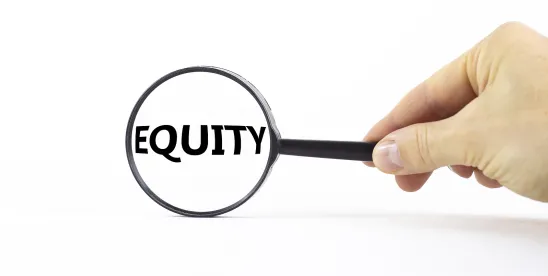When making a preferred equity investment behind senior mortgage debt, both the senior lender and the preferred investor will have a number of concerns. Under what circumstances may the preferred investor exercise remedies? Will the preferred investor be entitled to additional notice and time to effectuate a cure of a senior loan default? If these concerns sound familiar, it's because these are the types of issues that we typically see addressed in intercreditor agreements between senior and mezzanine lenders. This article will provide an introduction to recognition agreements — which are roughly equivalent to intercreditor agreements in mezzanine loan transactions but usually differ from intercreditor agreements in several key ways.
For most preferred investors, recognition agreements are an essential component of the transaction and will typically be required as a condition to closing. Senior lender receptiveness to providing the preferred investor with typical mezzanine lender intercreditor rights varies. Some senior lenders will view preferred equity as "stealth" mezzanine debt and will resist. This article will explore some of the fundamental elements of recognition agreements that preferred investors will need to consider in every transaction.
Enforcement of Remedies
In preferred equity transactions, the preferred investor will reserve the right to exercise numerous remedies in the event of a default by the common equity investor. For example, the preferred rate of return may be increased during any period that a common equity default is continuing. However, in the case of a common investor default, the primary "hammer" that the preferred investor must wield is the right to take control of the underlying real property asset. Senior loan documents, however, typically prohibit changes of control without senior lender approval. The recognition agreement must provide a mechanism for the preferred investor to exercise its control rights without prior approval from the senior lender, subject to satisfaction of certain conditions precedent. The conditions will include, among other things, the requirement that the preferred investor provides supplemental or replacement senior loan guaranties from a creditworthy guarantor that satisfies minimum net worth and liquidity requirements, as well as the senior lender's Know Your Customer (KYC) diligence.
The nature of supplemental or replacement guaranties that the preferred investor is required to deliver is often the subject of negotiation. Senior lenders will usually push to have the preferred investor deliver the same guaranties that were delivered at the closing of the senior loan by the common investor. Preferred investors are usually willing to deliver customary "bad boy" carve out guaranties and environmental indemnities but may push back on principal payment, completion, debt service and carry guaranties.
Rights of Cure
At a bare minimum, the preferred investor will want the recognition agreement to provide that, if there is a default under the senior loan, the preferred investor will receive notice of the default at the same time as notice is delivered to the senior borrower, and the same opportunity to cure as the senior borrower. Ideally, the preferred investor will have extended cure rights. In particular, for non-monetary senior loan defaults, the preferred investor will need sufficient time to exercise remedies and take control of the underlying real property asset in order to effectuate a cure. Extended periods of cure for monetary defaults are also desirable but may be limited in number (i.e., monetary defaults can only be cured by the preferred investor a limited number of times during the term of the senior loan).
Right to Purchase Senior Loan
In intercreditor agreements between senior and mezzanine lenders, in the case of a senior loan default, the mezzanine lender will typically have the right to purchase the senior loan prior to the senior lender completing a foreclosure or accepting a deed in lieu of foreclosure. The purchase right acts as a "safety valve" of last resort, providing the mezzanine lender the opportunity to call a halt to a foreclosure that would result in the total loss of its investment. Preferred investors should strongly consider pushing for similar rights in recognition agreements. Senior lender receptiveness to granting such a purchase option to preferred investors varies, with some senior lenders viewing the purchase right as simply an opportunity to delay foreclosure. A key point of negotiation will be whether the purchase price for the senior loan will include amounts above the principal amount of the loan and accrued interest at the standard rate (i.e., whether the purchase price will include default interest, late charges, prepayment premiums, yield maintenance, etc.).
Guaranties
Preferred investors often will require a "bad boy" carve out guaranty and environmental indemnity — and possibly other guaranties — from the same guarantor as the guarantor under the senior loan. The recognition agreement should address what happens when both the senior lender and preferred investor have claims against a "common guarantor." Typically, the senior lender will require that the preferred investor's claims against a common guarantor are subordinated to the senior lender's claims, and any proceeds recovered by the preferred investor from a common guarantor must be turned over to the senior lender and applied against the senior loan obligations. Preferred investors will want the right to provide notice to the senior lender of preferred investor claims against a common guarantor, as well as the right to keep proceeds in the event that the senior lender fails to exercise claims against common guarantors within a specified period of time following the notice.
Other Provisions
Other considerations when negotiating recognition agreements include the following:
- Subordination: The senior lender usually limits the right of the preferred investor to receive returns on the preferred equity while the senior loan is outstanding. Payments of preferred equity "principal" are usually not permitted prior to repayment in full of the senior loan. Distributions of cash flow to the preferred investor are usually permitted so long as the senior loan is not in default.
- Permitted Transfers: Preferred investors will seek expanded "permitted transfer" rights beyond what the senior loan documents may permit for the senior borrower. In particular, preferred investors will want the right to transfer noncontrolling interests in the preferred equity without senior lender approval. Preferred investors may also want the right to transfer a controlling interest in the preferred equity to a "qualified transferee," which may include a preapproved list of potential transferees. Senior lenders, concerned about who ultimately may control their borrower, may push back on the preferred investor's transfer rights.
- Modifications: The senior lender may prohibit modifications to the preferred equity documents without prior senior lender approval. Senior lenders will usually resist restrictions on modifications of the senior loan documents. Preferred investors, however, can rely on "major decision" provisions of the preferred equity documents, which will prohibit the common investor from entering into amendments to the senior loan documents without preferred investor approval.




 />i
/>i
